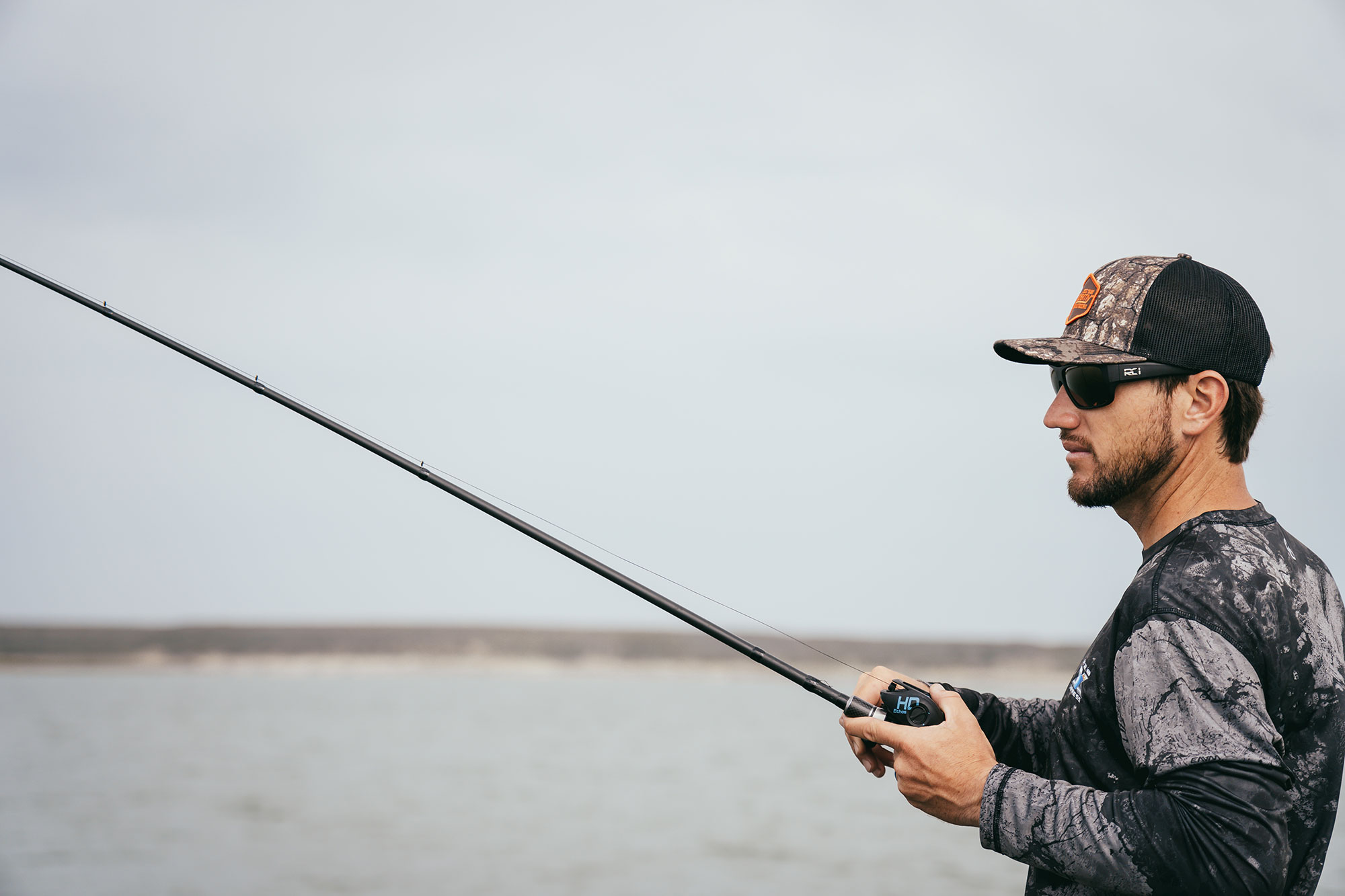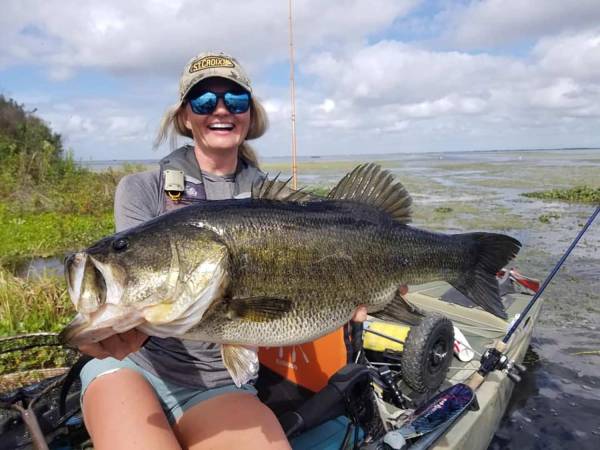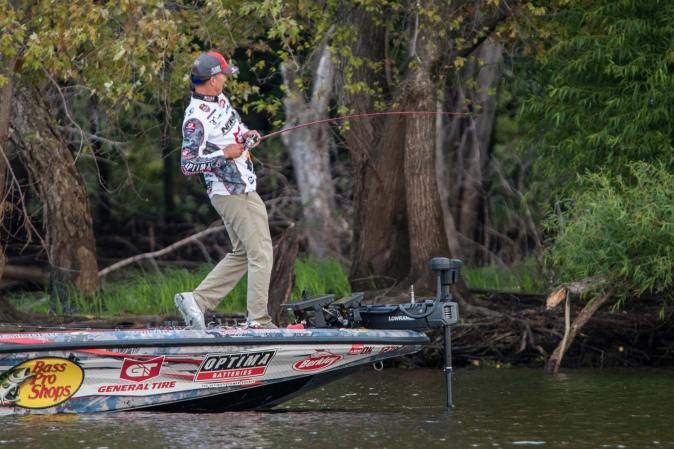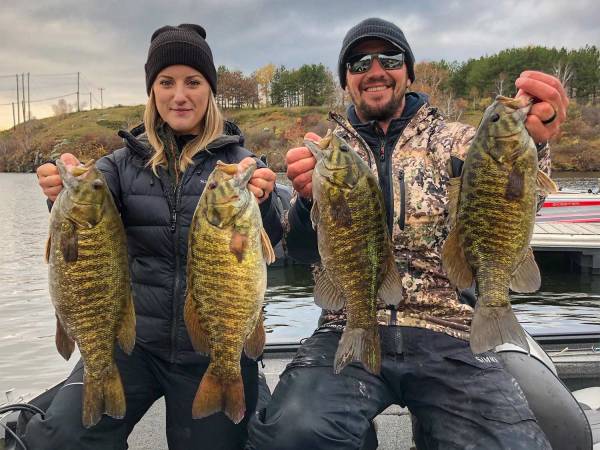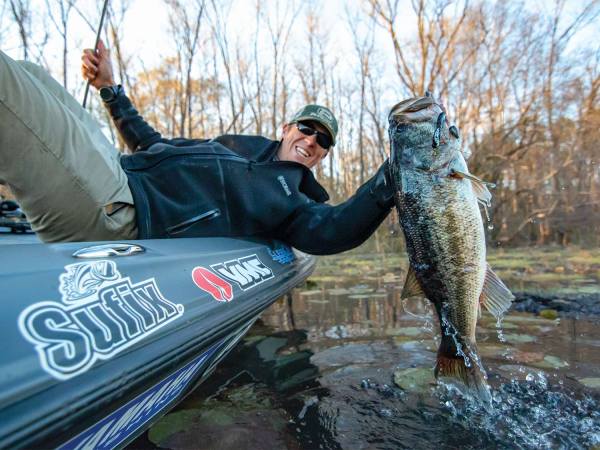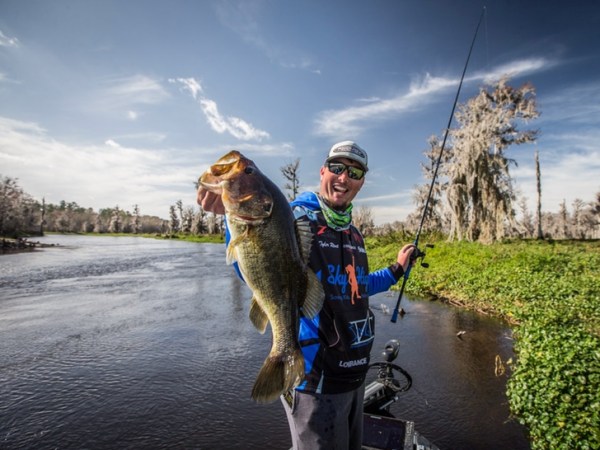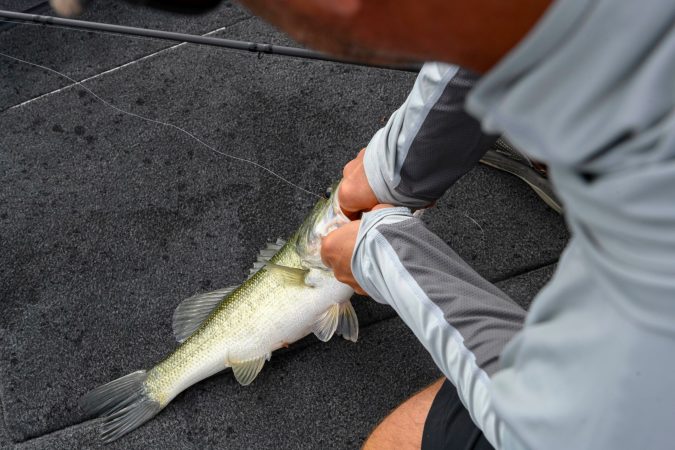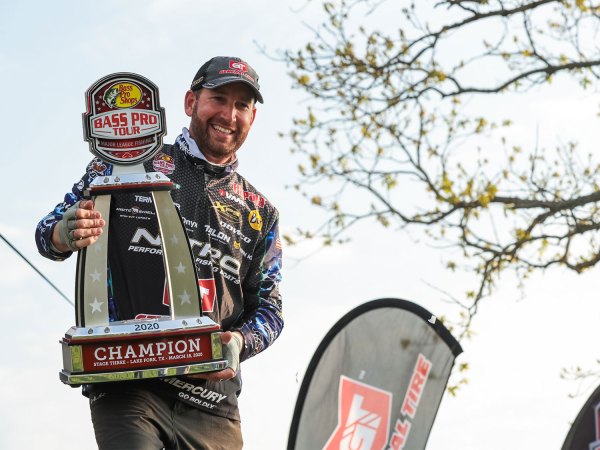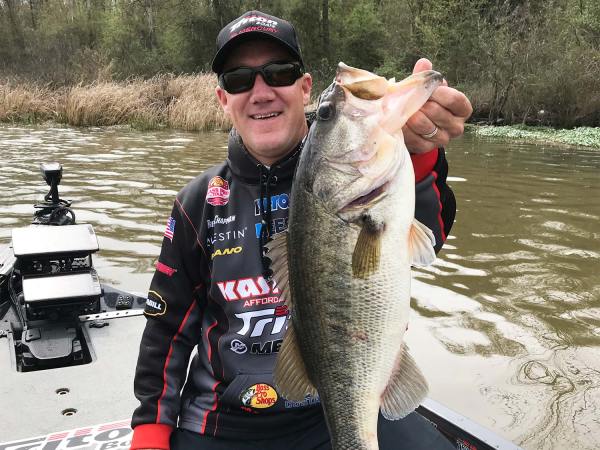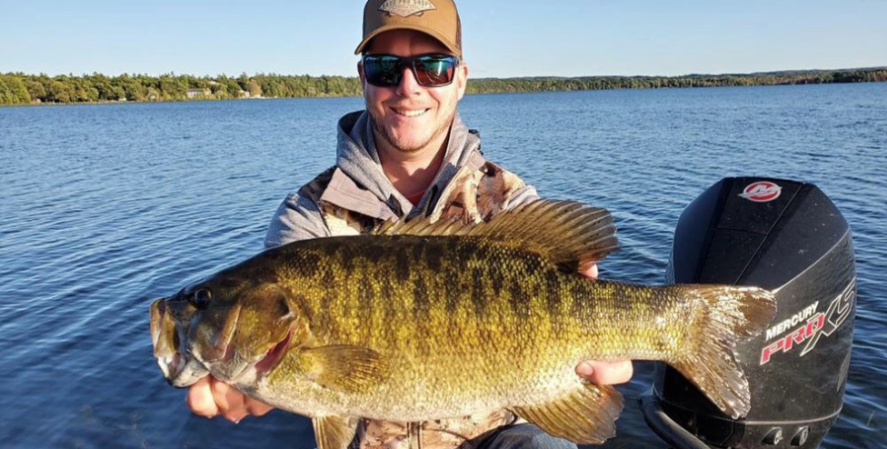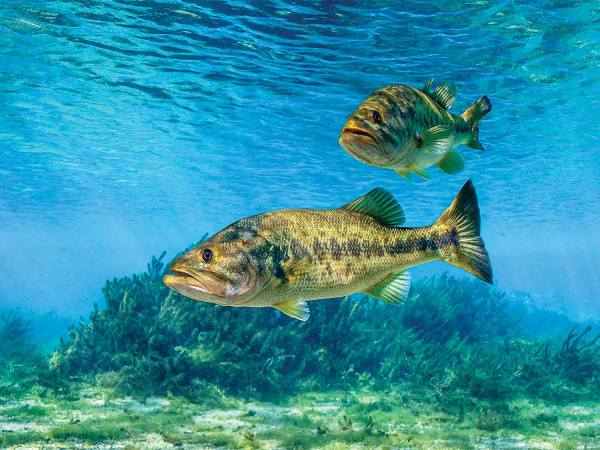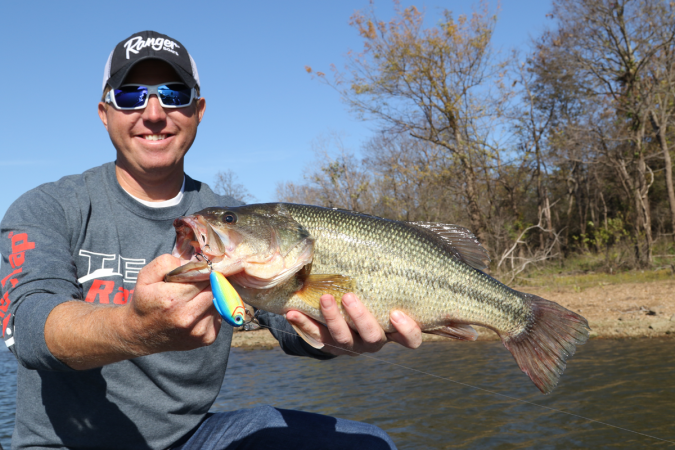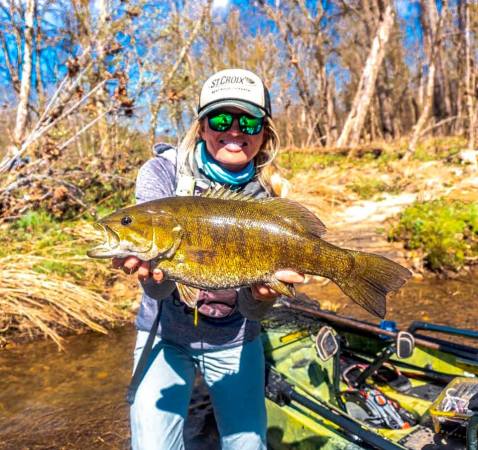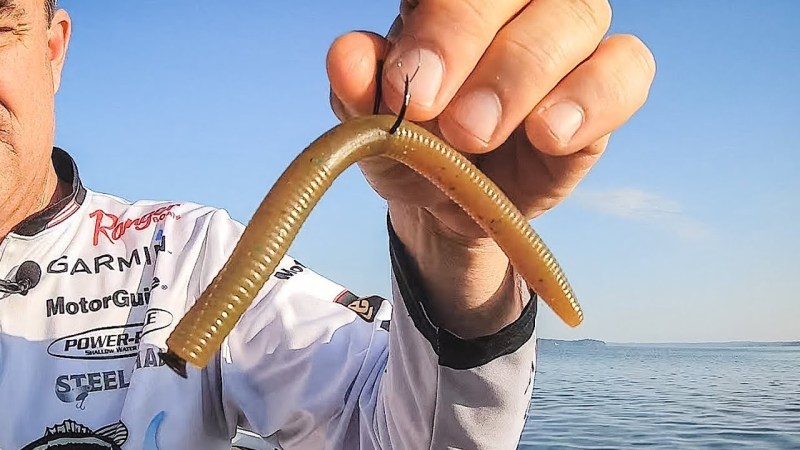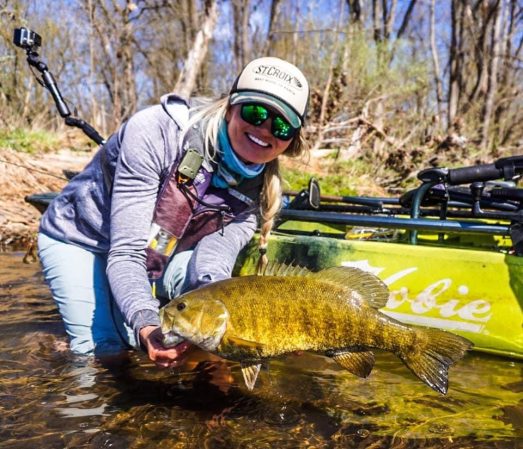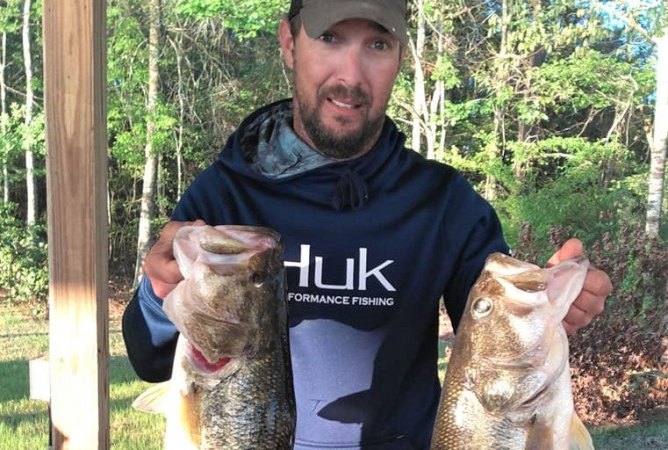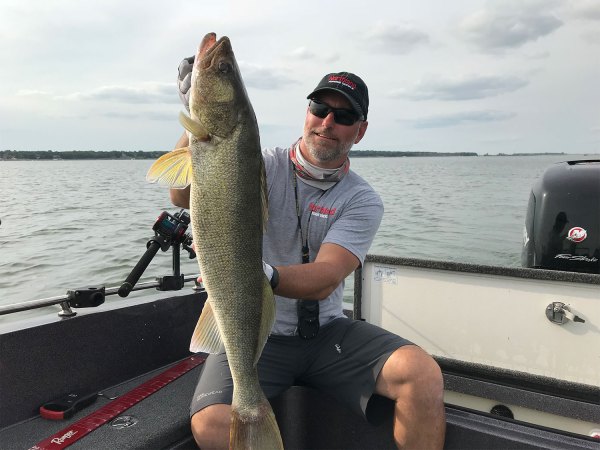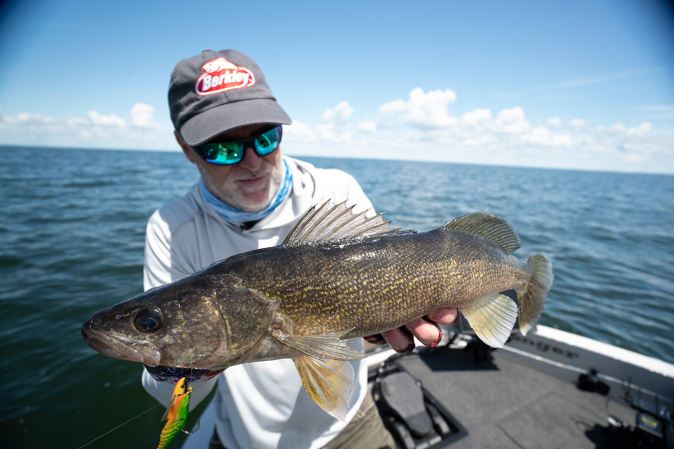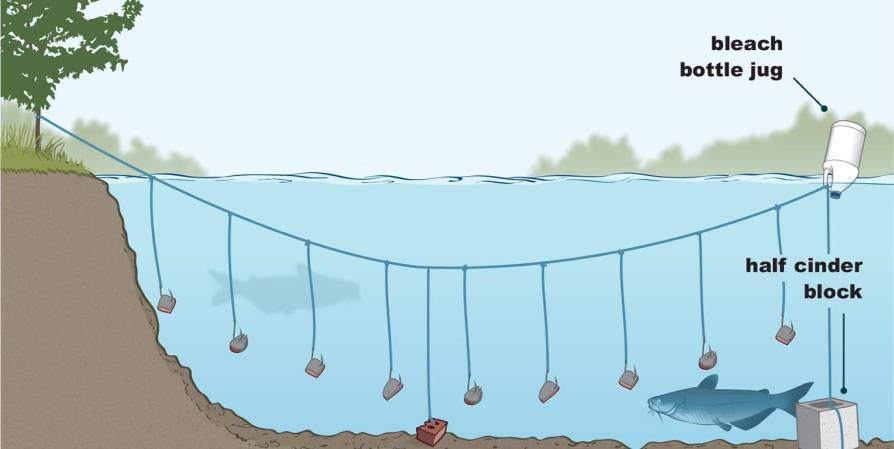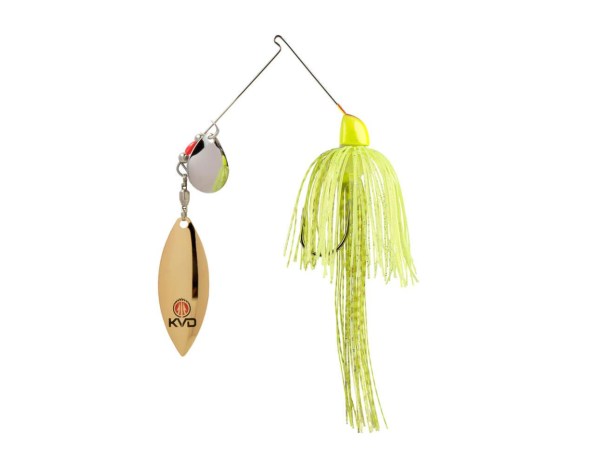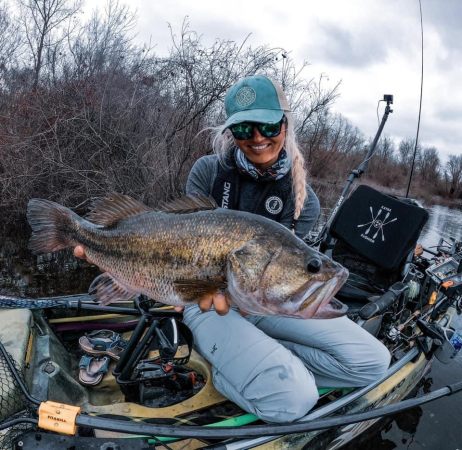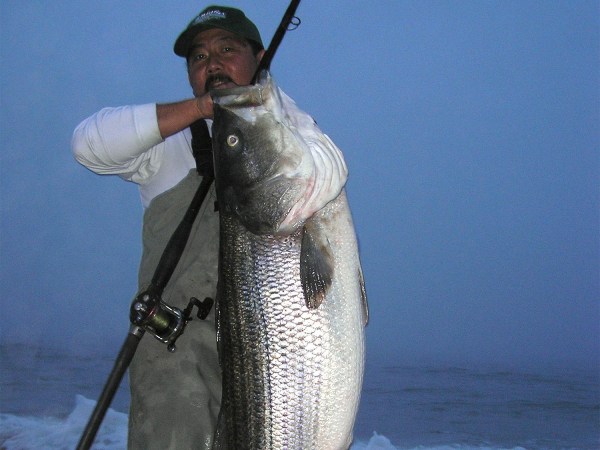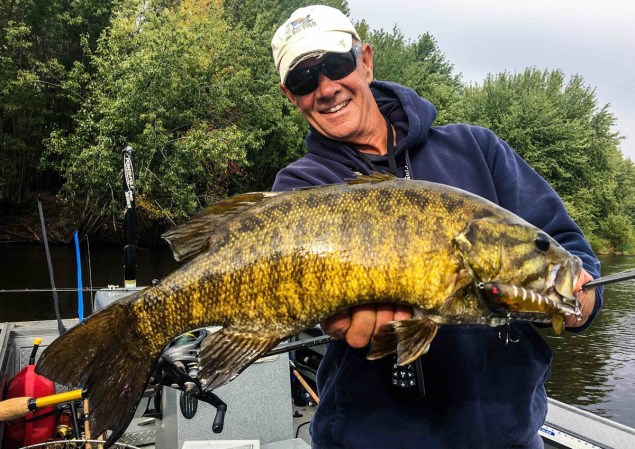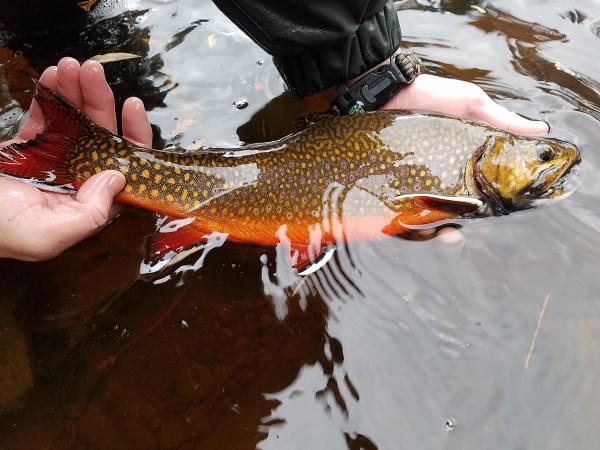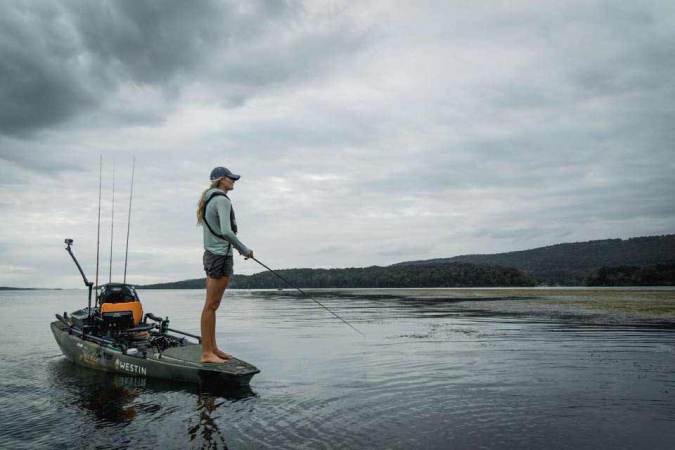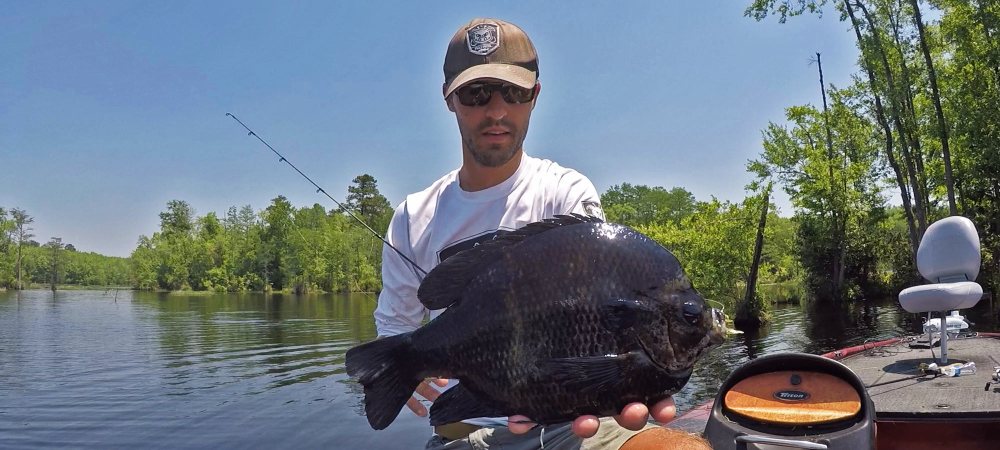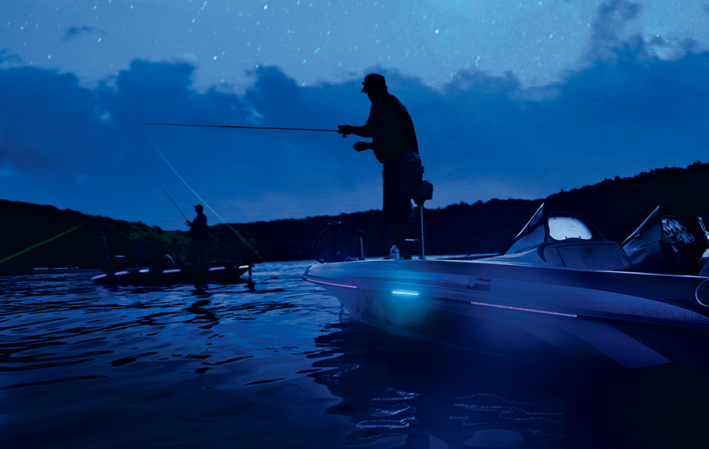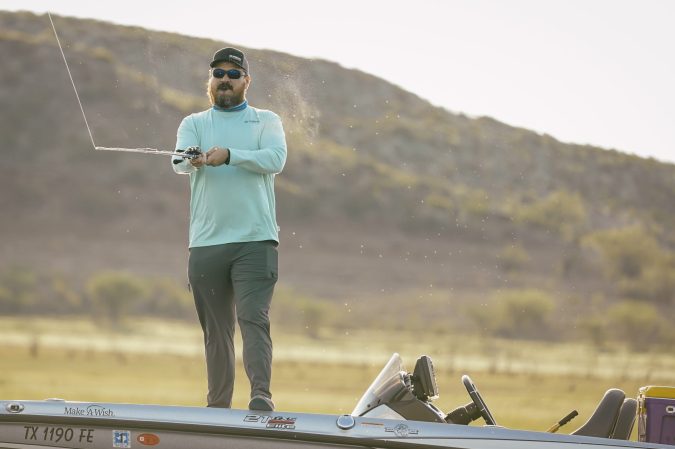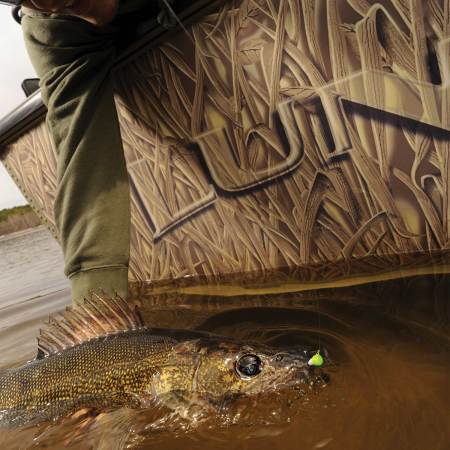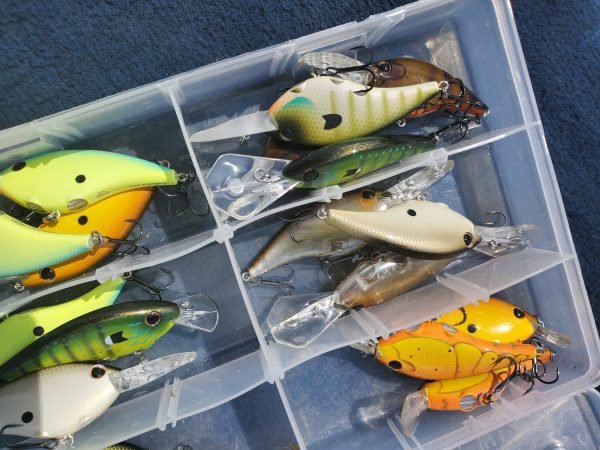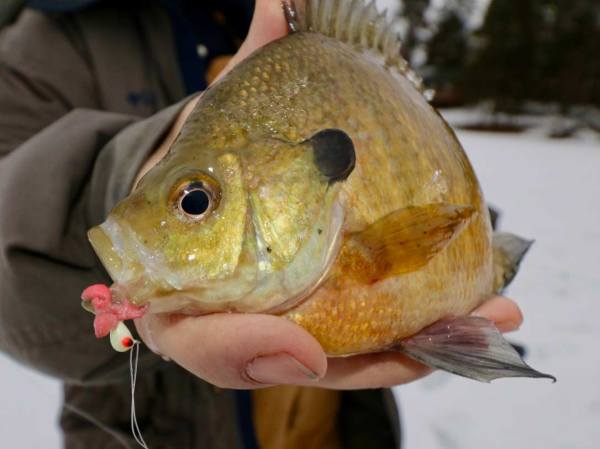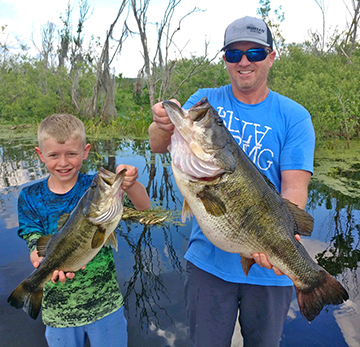Not surprisingly, pro angler Stetson Blaylock pulled an almost five-pound largemouth out of the grass beds of Amistad Reservoir, a south Texas fishery that sits on the U.S.-Mexico border, while the rest of us missed bites and snagged lures in the hydrilla. Blaylock fishes the Bassmaster Elite Series after having spent 10 years on the FLW Tour. And unlike many of his peers, he utilizes a lot of inexpensive tackle novices like you and I fish with. Some of his go-to rods and reels from Academy Sports + Outdoors cost under $100, which is pretty remarkable in an age when there is so much emphasis placed on fishing gear with a high price tag and name-brand cachet.
But even though Blaylock fishes with every-man gear, he is a far cry from us weekend warriors who love to spend a Saturday afternoon on the pontoon, swilling beers, and hooking the occasional bass from the waters just below the fish feeder. And if you’re like me, you probably think the heat of late summer and early fall are god awful times to try and catch bass. Well, for greenhorns, it can be. Most big bass are not crashing baits right now. But with a little more time on the water—and these tips from Blaylock—you can start landing more quality fish
Outdoor Life: We almost always see pro anglers throwing baitcasters over spinning reels. Is there a decided advantage in using one or the other?
Stetson Blaylock: Both have an important place in my boat. Spinning rods give you more control when you are using lighter line and baits. You can be more accurate with casts and have more control of smaller fish when they are on your line. One thing a baitcaster does, is the stiffer rod gives you better control in heavy cover, and you can be more precise with it when you are throwing heavier line and baits. Any time I need to finesse a fish into the boat, I downsize my line weight and go to the spinning rod. But one is not necessarily better than the other. I just use them to fish different types of structure.
OL: I grew up hearing that fish go deep in the heat of summer, but at Amistad we started off fishing grassbeds with topwater lures. Why?
SB: So there are a couple reason why topwaters are effective in warm weather. When it gets really hot the upper part of the water column has more oxygen in it, and so that’s where you will often find the fish. Fish that are living in 10-foot of water when it’s hot are going to come towards the surface, because that’s where the oxygen is. Also, the shad are going to push up as well, and so that is where the bass are going to be feeding.
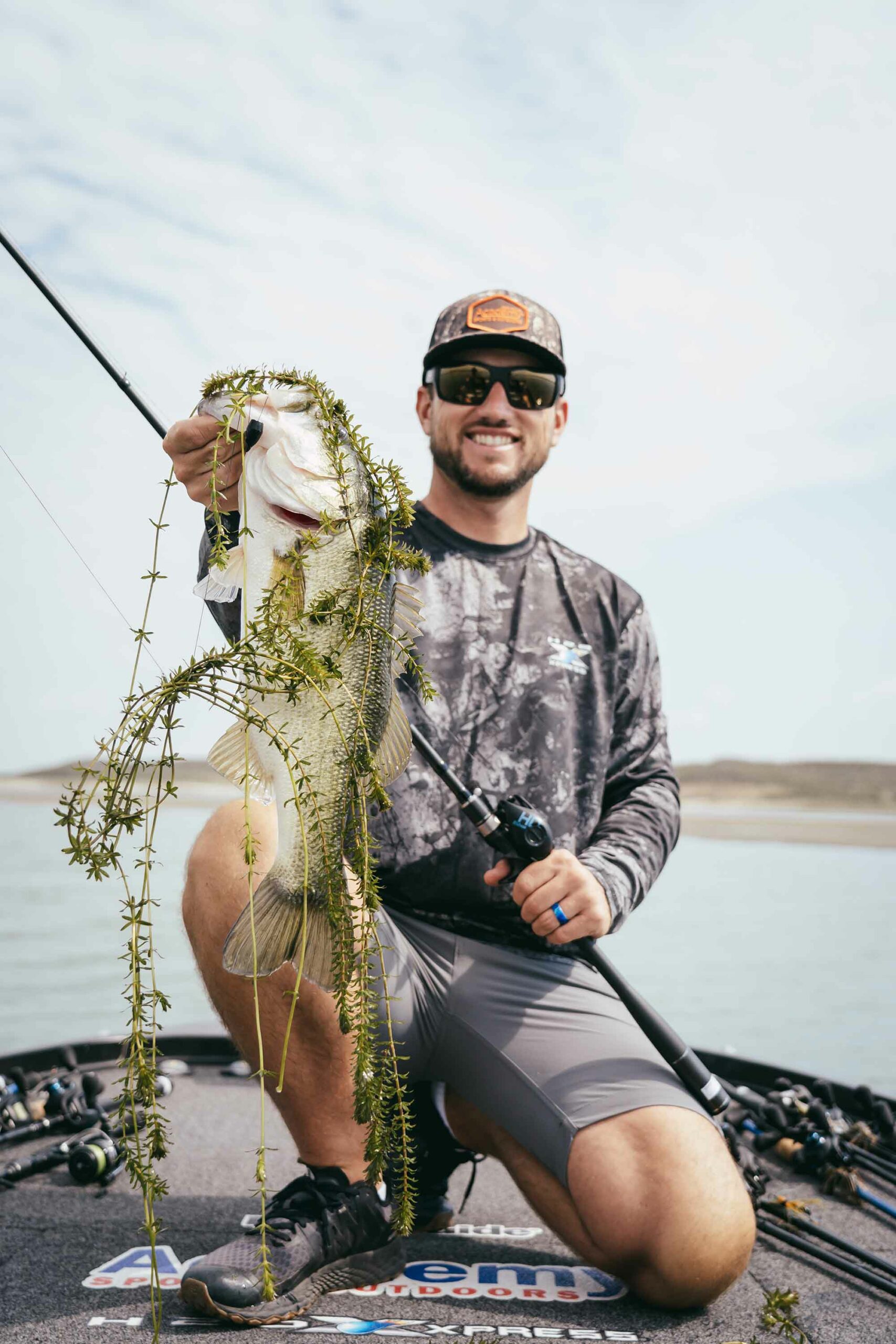
OL: Bass are so much harder to catch in hot weather. How do I get better at setting the hook when they aren’t aggressive?
SB: That’s a loaded question. I think when bass are not real aggressive, you almost have to have a sense that you can only gain by experience. So spend more time out there in the summer. Anyone can feel a bite when a bass smashes the bait, but a majority of big bass don’t bite like that. They just swallow the bait and let it sit in their mouth.
For topwaters, I don’t even set the bait until I feel that fish pull on it. A lot of time bass are tracking a topwater and they may just bump into it. Just keep working the bait like you would if a fish wasn’t on until you feel that pull from the bass. If I’m fishing a Texas rig worm through grass and feel a bite, I pause and then reel up my slack. If you keep working the bait in this scenario, you’re going to pull the bait right out of the fish’s mouth.
You have to realize too that unless you are fishing a stocked pond, you are not going to get very many bites on public water, and a newbie is going to miss a lot. So just stay patient.
Read Next: 4 Tactics For Catching Late-Summer Smallmouth Bass
OL: How do you decide where to go on bodies of water you have never fished? What should a novice angler consider before hitting the water?
SB: Everybody’s process of breaking down a lake is different. You need to know what kind of fishery it is: rocks, grass, deep water, is it a clear lake, or is it murky, etc.. Check internet forums, google the fishery, and use local fishing guide websites to find out all you can about the water you are fishing. Local guides won’t give up their best stuff, but they will give you enough to be effective, so try and contact them before you go, (or even book a morning or full day with them).
You also have to have a purpose and think about what you’re going to do before putting the boat in the water. At Amistad, the bass had been biting on topwaters. But after throwing mine for 5 minutes, it didn’t feel right to me. So started working a heavy sinker through the grass, and caught one that was five pounds. I can’t explain to a novice how to do that. It comes with experience. But you can do the research and use the resources that are out there. Talking to guides can really help. They aren’t going to give you the exact juice for catching big bass, but they can point you in the right direction. And remember that what worked yesterday might not work today, so don’t be afraid to change it up.
OL: What lures should we be throwing on hot summer days and why?
SB: That’s going to be determined by fishery, but let’s say you’re in the Southeast going after largemouth. They are going to be around brush piles and deep rock, so you need a swim bait that looks like a shad and reel it through those areas. If you see bass schooling up (jumping or swimming at the water’s surface is a good indicator) cast a topwater. If there are grassmats in the fishery, casting a frog is a good tactic. You can also hit the edges of grass with a swimbait, topwater, Texas rig, or punch rig. If you try all that and it doesn’t work use a buzz bait or Booyah toad runner.

